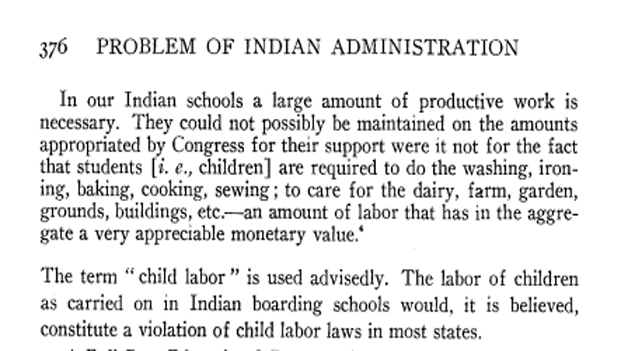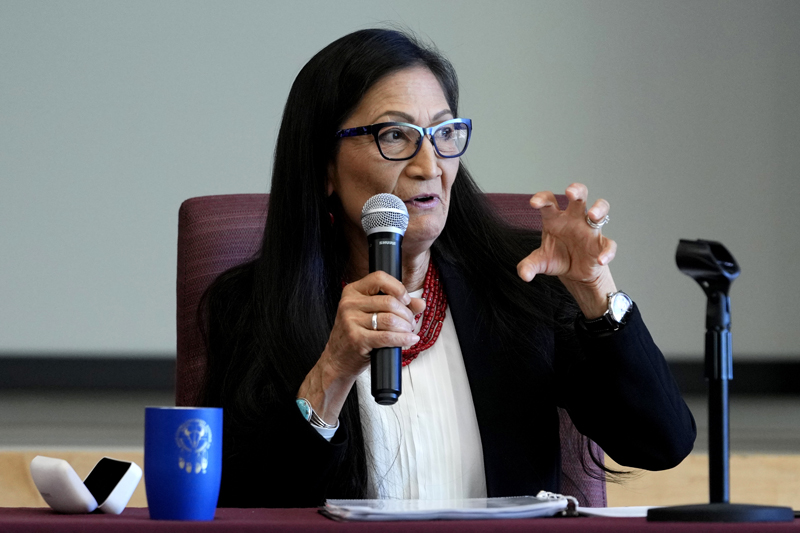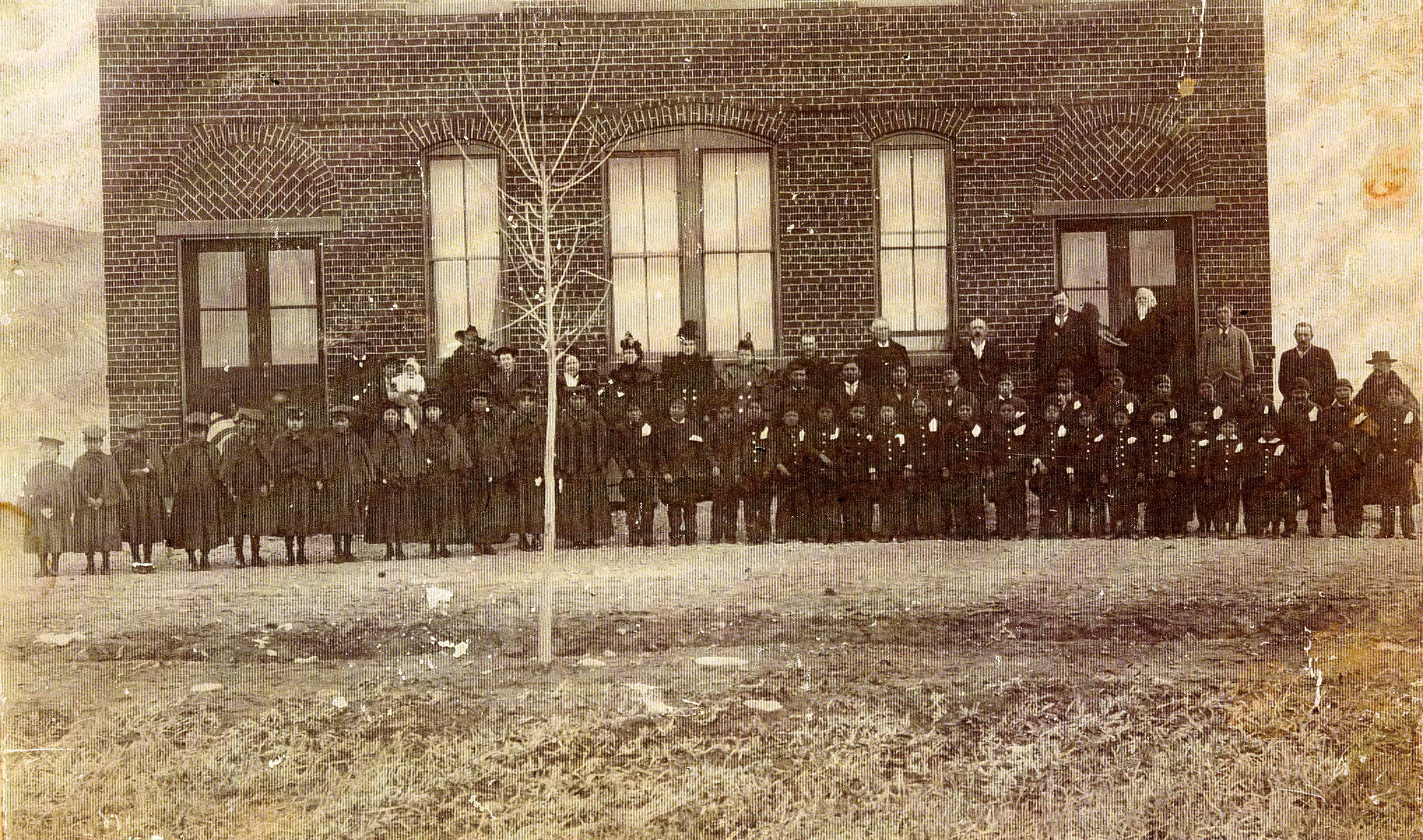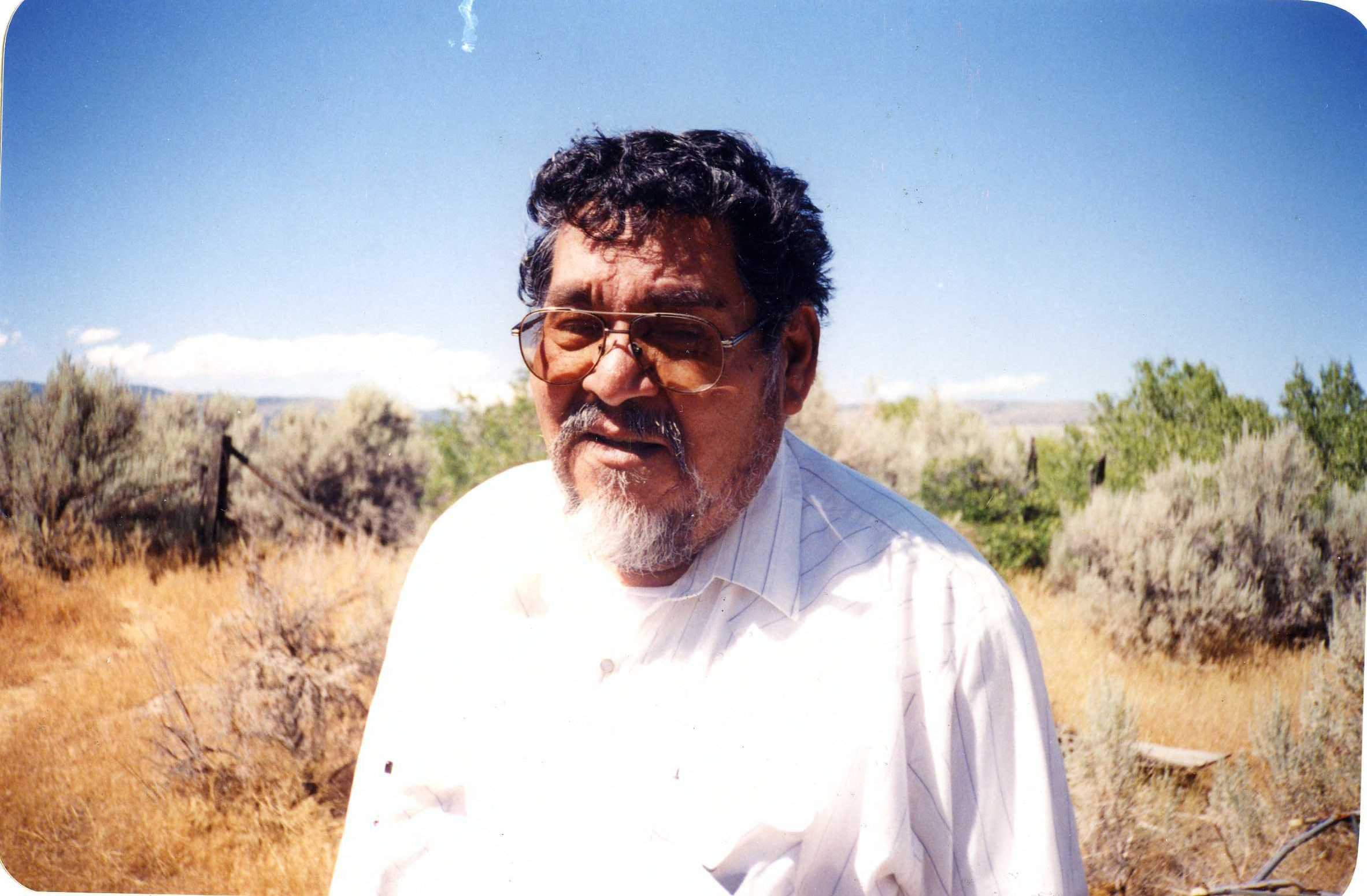
“From the littlest to the biggest, they have to work.”
Work at the Uintah and Ouray Boarding Schools included “the most distasteful drudgery.” And Ute students were the ones assigned to do it.
In our Indian schools a large amount of productive work is necessary. They could not possibly be maintained on the amounts appropriated by Congress for their support were it not for the fact that students are required to do the washing, ironing, baking, cooking, sewing; to care for the dairy, farm, garden, grounds, buildings, etc.-an amount of labor that has in the aggregate a very appreciable monetary value.

Work at the Uintah and Ouray Boarding Schools included “the most distasteful drudgery.” And Ute students were the ones assigned to do it.
Sheila R. McCann
The Salt Lake Tribune
Hauling water and chopping wood. Planting potatoes and corn and melons. Taking care of horses, cows and hogs. Building fences, digging ditches, leveling ground and laying board sidewalks. Doing thousands of loads of laundry, ironing, mending, sewing clothes and underwear. Cleaning bathrooms, cooking and helping in the dining room.
Ute children were required to work day after day at the boarding schools, providing unpaid labor for the underfunded institutions they were often coerced to attend.
Superintendents boasted about how much work the students supplied to the Utah schools, detailing it for decades in their annual reports.
“Even the smallest girls were required to do such work as they could perform in the various departments,” Uintah Superintendent G. V. Goshorn assured his superiors in 1897. School leaders at times described the chores as part of the Utah students’ training — but at other times, acknowledged the labor saved money and the children weren’t learning from it.
Some reports noted that Ute parents objected to their children working for free; from 1898: “One of the head men refused to allow his girl to come to school because we would not pay her any money for the work she did.”
In a 1928 hearing, an interpreter shared the concerns of Sapaneese, who had children living at the Uintah Boarding School: “He don’t think the clothes they have is what they ought to have for winter. He says from the littlest to the biggest they have to work. He says they are hungry.”

Earlier that year, the scathing 1928 Meriam Report had declared that “the labor of children as carried on in Indian boarding schools would, it is believed, constitute a violation of child labor laws in most states.”
“In theory,” it said, there was a distinction between work that trained children and “work done primarily for the support of the institution.” But teachers “say that much of it is, as a matter of fact, production work for the maintenance of the school.”
In a stilted but pointed reproach, the report chided the country: “Not enough consideration has been given the question of whether the health of the Indian children warrants the nation in supporting the Indian boarding schools in part through the labor of these children.”
Nearly a century later, that criticism echoed in the recent federal boarding school investigation overseen by Interior Secretary Deb Haaland.

The boarding school system “predominately utilized manual labor of American Indian, Alaska Native, and Native Hawaiian children to compensate for the poor conditions of school facilities and lack of financial support from the Federal Government,” the initiative’s first report said last year.
That focus left students “with employment options often irrelevant to the industrial U.S. economy,” it said, “further disrupting Tribal economies.”
From the time the Uintah Boarding School opened in January 1881 in Whiterocks until the summer of 1904, it didn’t have a water system. So for more than two decades, boys were pressed into hauling water from streams on the grounds.
Ute parents objected to their sons, in particular, providing manual labor, Uintah Superintendent J. E. Kirk wrote in 1899.
“I will say for the boys that their work, consisting as it does of chopping wood and of carrying water from 30 to 60 yards, is a real drudgery and hardship,” Kirk conceded, “especially so when the thermometer is 25° and 30° below zero, and might justly meet with mild remonstrance.”

Two years earlier, Uintah Superintendent G. V. Goshorn had noted: “[Water] must be dipped from the stream and carried in buckets to the different departments. … Over 18,000 articles of clothing, bedding, towels, etc., were washed in the laundry during the last year, and the supply of water is very inconvenient for this purpose.”
At the Ouray school, which opened in Randlett in April 1893, all the water the school needed had to be hauled “from the Uinta River, a distance of 300 yards or more,” Superintendent John M. Commons pointed out in July 1900.
“This requires the work of a team and two or three large boys half the time, and then the supply is inadequate and unsatisfactory. As we have but one team, it is easy to see how such a system hinders all other work."
“It is the most distasteful drudgery and does not teach the boys anything,” he wrote.
“I know from personal experience that when the mercury ranges from 10° to 20° below zero, and when the pails, barrels, and wagon become covered with ice from an inch to 4 inches in thickness, hauling water for all purposes in a school of 50 or 60 pupils, is a real hardship.”
The lack of water was a fire risk and a health risk; and without sewage systems, waste was saturating school grounds, superintendents repeated in annual reports.
Water and sewage systems were finally installed at both schools in 1904.
“The drudgery of hauling water is done away with now that the water system is complete,” Ouray Superintendent Oscar M. Waddell wrote. “The time which has been used in hauling water in past years can now be used to teach the boys something useful.”
From the Uintah boarding school’s earliest days, students were doing housework, sewing and gardening. With their annual reports, officials filed statistics on the number of acres planted, bushels of vegetables raised, and later, put a dollar value on what that labor produced.
In 1884, the children “had regular hours for work.” Boys “cut all the wood for the school-room and kitchen” in the autumn and winter.
The children were “mostly small, averaging from six to fourteen years of age, new Indian Agent T.A. Byrnes wrote in 1887. But the girls were handling “household duties” and the boys worked outside — sometimes in vain.
“Under the direction, and with the aid of the industrial teacher and myself, the boys planted 5 acres in corn, potatoes, melons, and garden truck,” Superintendent Fannie Weeks wrote the next year. “ … I regret having to state that their labor was in vain, from the fact that the garden seeds were received entirely too late for planting.
“However, the experiment was made, and the consequence is, at least two-thirds of the tender plants were killed by the intense heat of the sun and dry, hot, wind storms. A great many of the seed were entirely worthless and did not come up at all.”
Click by year to read additional excerpts about Uintah Boarding School
Decades later, 1930s schedules for the Whiterocks school and oral history interviews with Utes who attended in the 1940s show the work details continued.
In his June 1894 report, Superintendent Lewis D. Waters gave a snapshot of just how integral the students’ work was to the new boarding school. He wrote:
“The girls have been regularly detailed to work in the kitchen, laundry, and sewing room and to assist the matron in other housework. These details have been changed weekly, so that all the girls have had the same amount of work in each department.
“All the work in the kitchen and dining room has been done with the assistance of the girls. They have done good work here. On a few occasions, when the work was especially heavy, it has been necessary to detail boys to assist in the laundry …
“In the sewing room, in addition to the mending, the girls have assisted in making their own clothes and underclothes for the boys, as well as the other necessary sewing for the school.
“Under the matron's direction the girls have cared for their own dormitories, and the halls, play room, and bathroom in their own building. The boys have been trained to care for their own dormitories and building.
“The boys have assisted in all the outdoor work, sawing wood, hauling water, caring for stock, irrigating and cultivating the field and garden.
“A field of about 30 acres has been fenced and sowed in oats and alfalfa. The oats promise a fair yield, and it is expected that the alfalfa will furnish abundance of hay after the present year. The garden has been well watered and cared for, but being on new land does not promise an abundant yield.”
As superintendents would continue to point out, the school needed a water system, Waters wrote. “The school is still in need of suitable bathrooms, laundry, and some means of piping water into the buildings,” he said.
“During the cold weather of the past winter all the water had to be hauled from the river, and to avoid freezing it was necessary to keep the barrels in the halls. The slop and dirt caused by the daily filling of these barrels were the source of much discomfort, as well as extra labor.”
Click by year to read additional excerpts about Ouray Boarding School
Ute families and former students never forgot the years of forced labor by children. But for much of the nation, the work faded into history.
Leslie Kelen interviewed Julius “Chunky” Murray Jr. as part of a 1980s oral history initiative at the University of Utah. Kelen said he “wasn’t following” when he asked what Murray learned at the Uintah Boarding School — and Murray started listing his chores.

“What were the kinds of things that they taught you there? What were they aiming to make of you?” Kelen asked Murray, who attended the school beginning in the 1940s, and had become a Uintah County deputy sheriff.
“Nothing, just general school,” he answered. “I was there working in the laundry. I worked in the kitchen, when I was older. I worked in the laundry room, I worked in the kitchen, scrubbing pots and pans, I got pretty good at that. And running the mop in the dormitory.”
Kelen was confused: “I'm not following something here — Now, they made you work there?”
Murray: “Um huh.”
Kelen: “As part of your education?”
Murray: “I guess. We done our own cleaning.”
And that cleaning had to be done well, remembered Ethel Grant, who attended the Whiterocks school in the 1920s. She later worked there, and after the school closed, worked on educational materials and curriculum for schools about the tribe.
“We learned it up there at Whiterocks school, how to clean real thoroughly,” she told Kelen in 1982. “Because they inspected our work every Saturday, if they saw dust we got —”
She seems to have made a gesture, and Kelen finished her sentence: “You got knocked down.”
“Uh huh,” Grant confirmed.
Today, in connection with the ongoing federal investigation , Assistant Secretary for Indian Affairs Bryan Newland has recommended funding language revitalization programs, health studies and a federal memorial in honor of the students who experienced the federal boarding schools.
His first report doesn’t suggest, however, considering compensation for the extensive unpaid labor of America’s indigenous children, so key to the system created to assimilate them.